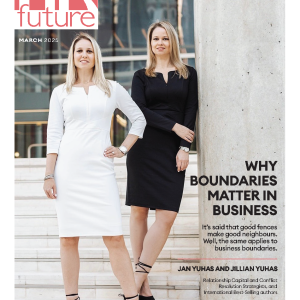The importance of teamwork and collaboration in the workplace is widely-known in the HR world. But what about employee networking? It’s a concept that is often overlooked, but can significantly boost collaboration among your team.
Networking is also desired among employees as 95% of professionals agree that face-to-face meetings are needed. However, with the rise of remote work and online meetings, finding creative ways to boost collaboration and build relationships with colleagues can be challenging.
That’s why I will be sharing 10 employee networking ideas that will help to build stronger relationships among your team and promote a more collaborative work environment.
#1 Host team-building activities
By taking the time to plan and execute fun and engaging team-building activities, you’re providing your employees with an opportunity to connect on a more personal level and build a stronger sense of community within your organization.
Here’re some fun and engaging team-building activities to consider:
- Escape Room Challenge;
- Sports Day;
- Charity Work;
- Team Lunch; and
- Creative Briefs.
#2 Create Employee Resource Groups (ERGs)
ERGs are a great way to connect with colleagues who share similar interests and experiences, while also learning more about other parts of your organization by taking part in ERG activities.
Not only that, but ERGs often offer leadership development opportunities, such as workshops and mentoring programs, that can help you grow as a professional.
#3 Share your company goals
You might think that keeping your goals to yourself would give you a competitive advantage, but your employees are the ones who can help you achieve them.
But how do you share your goals effectively?
You need to communicate them clearly and consistently. You can hold regular meetings or create a company newsletter to keep everyone informed. You want to make sure your employees understand the priorities and objectives of the company, so they can align their work accordingly.
By sharing your goals, you are significantly boosting employee engagement and creating a sense of purpose and direction.
#4 Encourage cross-functional projects
Cross-functional projects enable employees to connect with people with different experiences, skills, and knowledge. This not only expands their perspective on tasks but also allows them to learn more about the company as a whole.
For example, a finance professional can gain helpful insight on marketing strategies while teaming up with a marketer for a cross-functional project. These projects can create meaningful opportunities for interactions outside their usual circle.
#5 Establish a mentorship program
A mentorship program pairs experienced individuals with those that are less experienced in the same field, allowing the mentee to learn from the mentor’s expertise, experience, and industry insights. It’s a unique opportunity to cultivate a stronger sense of collaboration and create meaningful connections within your organization.
It promotes lifelong learning and professional development. When individuals feel supported and have someone to turn to for guidance, they’re more likely to take risks and push themselves out of their comfort zones.
#6 Implement “reverse mentoring”
The traditional approach of mentoring typically involves a senior employee teaching and guiding a junior one. However, with reverse mentoring, the roles are reversed, and the younger employee becomes the teacher, sharing their knowledge and exposure to new technologies, current trends, and social media platforms.
Reverse mentoring can also help to break down barriers and improve communication within an organization.
Imagine the benefits that a social media-savvy millennial could bring to the table for an established, yet social media-inexperienced senior employee. The senior employee could learn about the latest and most effective social media strategies, and the junior employee could benefit from the wisdom and experience of the senior team member. It’s a win-win situation.
#7 Encourage participation in professional development programs
Employees must continually update their skills to stay competitive and you should provide them with the top training solutions available. But it’s not just about personal growth. Encouraging participation in professional development programs is also an effective way to build employee networks.
Consider this scenario:
Two employees from different departments attend a professional development workshop together. During a group exercise, they realize they have similar interests and professional goals. They exchange contact information and begin exchanging ideas and advice after the workshop.
This connection could lead to valuable collaborations or even job recommendations in the future.
#8 Create collaboration spaces
By providing your employees with a designated area to work on projects together, you are not only encouraging teamwork, but you’re also promoting creativity and innovation.
Think about it, when you’re discussing a project with a colleague over lunch, do you feel more energized and motivated? Do you find that you come up with ideas you never would have thought of on your own?
The same can happen in a collaboration space where employees have the resources and opportunities to brainstorm and communicate with one another in a more relaxed setting.
#9 Provide opportunities for community service
By giving your employees the chance to give back to their community, you help foster a sense of altruism and purpose and create opportunities for your team members to network in a unique and meaningful way.
When you volunteer for a cause or organization, you’re often working alongside people from all walks of life – people you may never have had the opportunity to interact with otherwise. This gives your employees the chance to meet new people, learn about different career paths, and build valuable professional relationships outside of the office.
#10 Reward collaboration
Imagine a company in which marketing and sales teams don’t work together, or even worse, have an adversarial relationship.
By creating incentives that reward collaboration and cooperation, such as joint training sessions or team-building activities, these teams can develop a more positive working relationship.
Rewards don’t always have to be monetary. Experiences that promote professional growth and development, such as attending conferences or training events, can be just as valuable.
Conclusion
Implementing employee networking ideas is a powerful tool for any company looking to boost collaboration and overall productivity. Of course, not every strategy will work for everyone, so experimentation is key to finding what works best for your team.
Keep in mind that everyone benefits when employees feel connected and invested in teamwork. Start developing innovative employee networking ideas for your organization and reap their benefits.
Arkadiusz Terpilowski is a co-founder of Primetric – one the biggest B2B SaaS in Poland for managing profitability and people workload for professional services firms.
Natalie Bennett is a workplace dynamics enthusiast dedicated to enhancing collaboration through effective employee networking. With a background in organizational psychology, Natalie shares her expertise by providing actionable ideas to foster teamwork and build strong professional connections within organizations.
She believes that a positive work environment leads to increased productivity and innovation. In her free time, Natalie enjoys practicing mindfulness, hiking in nature, and attending workshops on personal development.













